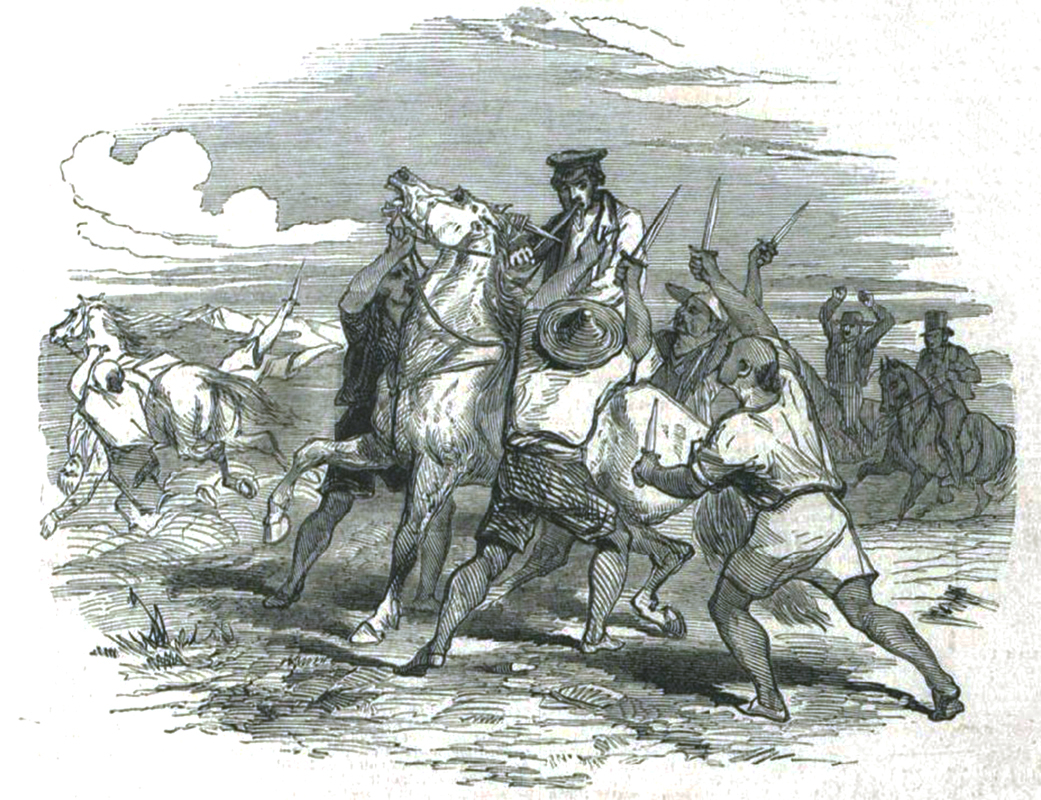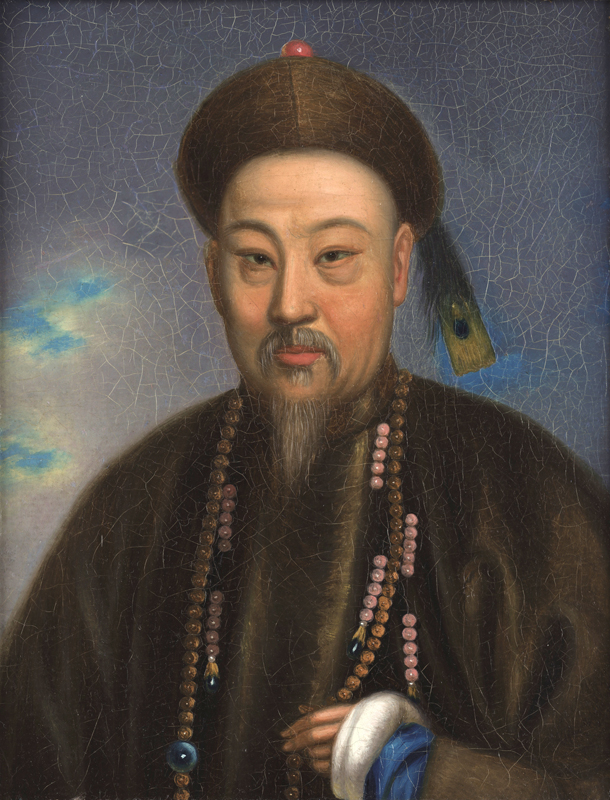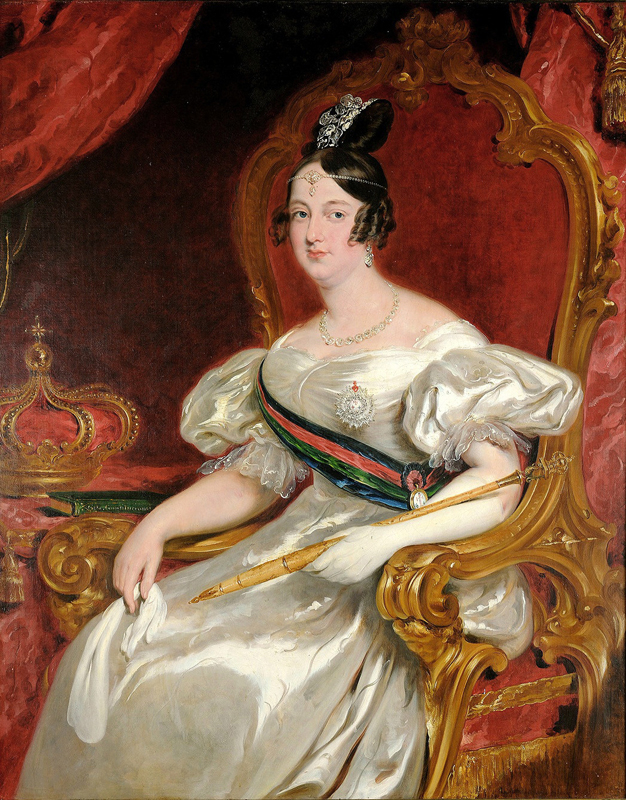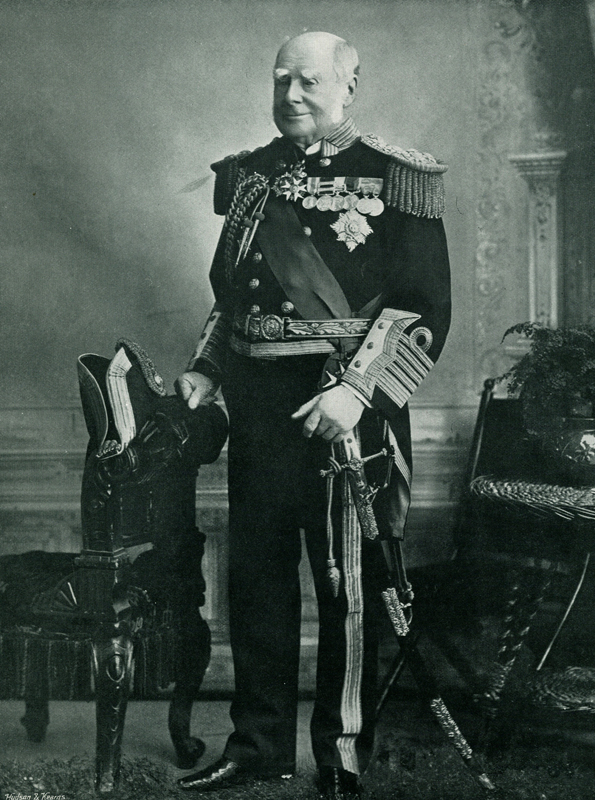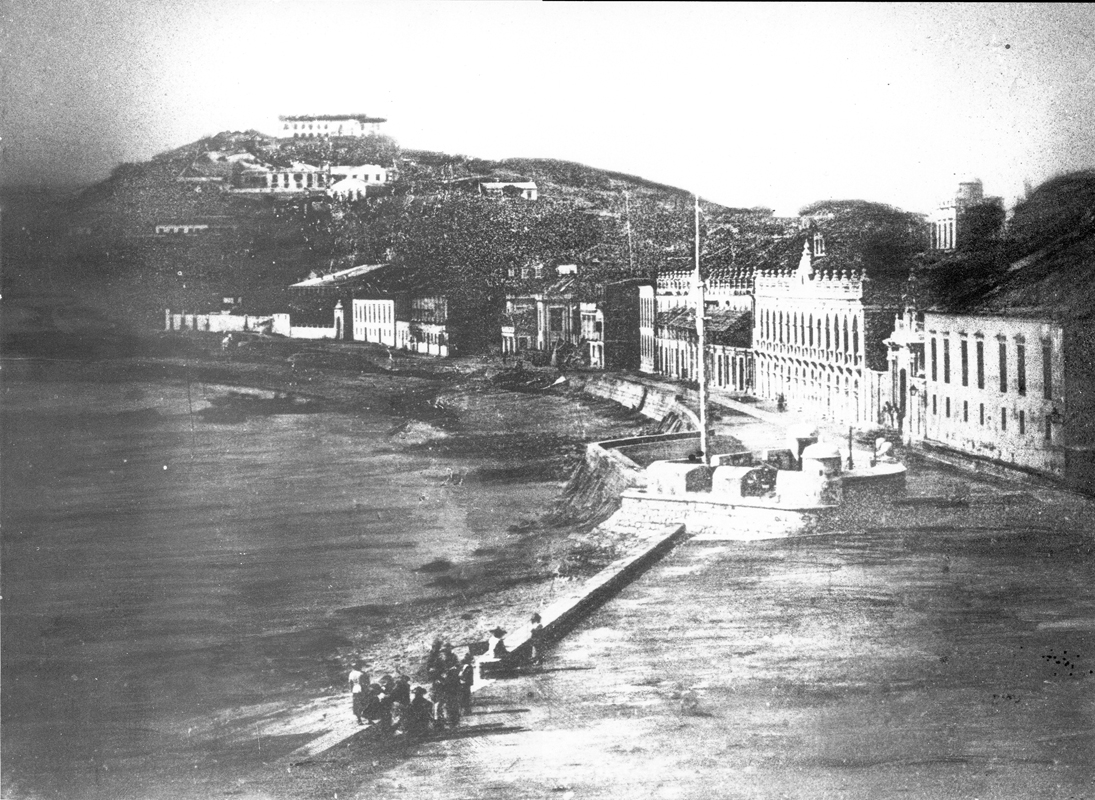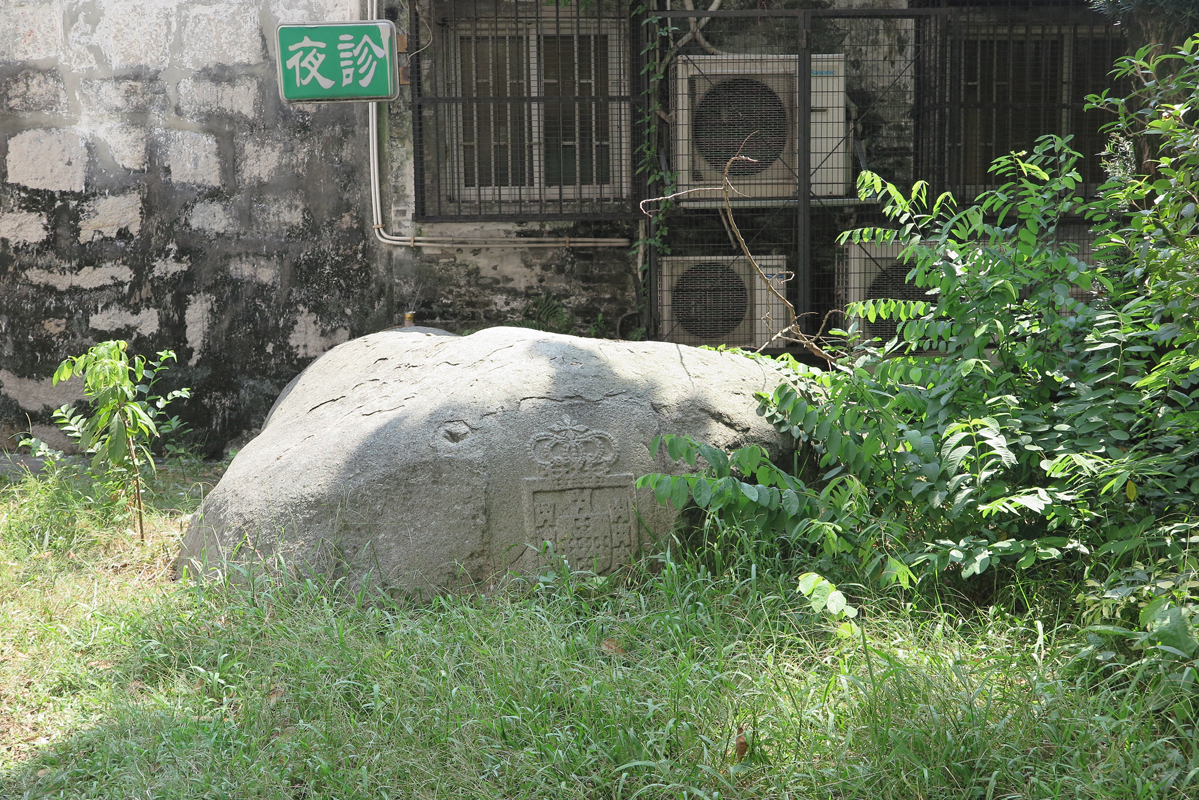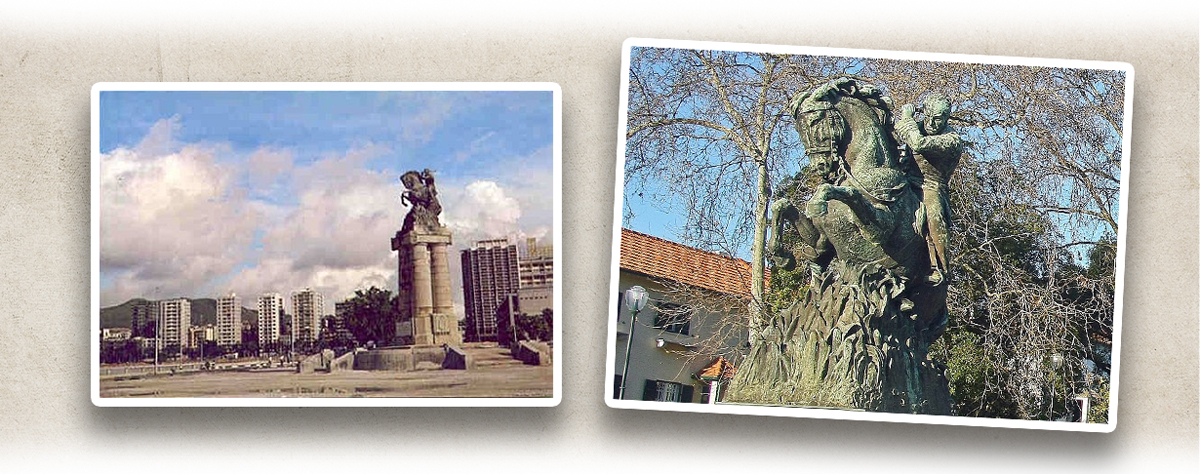The Treaty of Nanking (Treaty of Nanjing, 《南京條約》) signed in 1842 turned Hong Kong into a British colony. The treaty also stipulated the opening of five treaty ports including Shanghai (上海), striking Macao’s (Macau) significance as a trade port. Some Portuguese officials in Macao even refer the rise of other ports as “a fatal blow”. The Portuguese representatives from the Municipal Council of Macao then approached Qiying (耆英), the Qing (清朝) Imperial Commissioner, with nine demands to salvage Macao’s situation in 1843. They were hoping Macao would be granted similar advantages as Hong Kong, but the Qing court only agreed to relax some of the trade restrictions.
After the negotiations failed, the Portuguese established a provincial government of Macao (Portuguese Macao government) in 1844 and declared Macao a free port in 1845. Governor João Maria Ferreira do Amaral was sent to Macao for the colonial administration. Not only did the new governor put the Macao city, the area within the Border Gate, and Taipa under Portuguese jurisdiction, he also closed down the custom service branch of the Canton Customs. Ferreira do Amaral was assassinated by some Chinese villagers on 22 August 1849. He managed to remove Qing’s influence over Macao during his tenure nonetheless.
|
|
Why did Portugal step up colonising Macao? |
|
|
See answer below. |
Causeway Bay, Hong Kong, in 1846. The signing of the Treaty of Nanking in 1842 and Hong Kong’s opening-up marked a turning point for Macao.
The Qing court sent the Imperial Commissioner Qiying to Guangzhou (廣州) for signing the treaty in 1842. The Portuguese also sent a mission to negotiate with Qiying.
The Governor of Macao Adrião Acáio da Silveira Pinto jointly drafted a document with members of the Municipal Council of Macao, and judges from Macao’s justice system in 1843. The document to be presented to Qiying was known as the “Municipal Council of Macao’s Nine Demands”. The nine demands fell into three categories. First, the Portuguese demanded an exemption of land rent in Macao and an extension of the territory, so that they could receive the same treatment in Macao as Hong Kong. Second, they proposed to establish a reciprocal Sino-Portuguese diplomatic relations. Third, they demanded to relax restrictions on business management in Macao.
The following negotiations took place in Guangzhou, where Pinto, in his new role as the Portuguese Plenipotentiary Minister to China, met with Qiying. Qiying agreed to relax some trade regulations but refused to compromise on the issue of territory, the major concern of the Portuguese. Dissatisfied with the outcome, Pinto followed the U.S. mission’s (led by Caleb Cushing) practice of threatening to take the matter to Beijing (北京), but Qiying did not budge. Later, the Governor of Macao José Gregório Pegado put forward similar proposals to Qiying but failed. In the end, Portugal resorted to force to colonise Macao.
Maria II of Portugal announced the establishment of the provincial government of Macao, Timor, and Solor in 1844 and proclaimed Macao a free port in 1845.
João Maria Ferreira do Amaral, the Governor of Macao (1846-1849). He lost his right arm in the War of Independence of Brazil and was therefore nicknamed “the one-armed general”.
Three months after João Maria Ferreira do Amaral took office as the Governor of Macao, he requested fast boat owners to register and imposed taxes for docking in the Inner Harbour of Macao. Casualties were caused when the governor’s troops suppressed the fast boat owners in the protest known as “the Revolt of the Faitiões (fast boats)”. The Chinese went on strike during the protest, but were faced with Ferreira do Amaral’s threat to bombard the Inner Harbour area and the Portuguese force augmented by the British fleet sent from Hong Kong. They gave up struggling in the end. After the Revolt of the Faitiões, the Portuguese Macao government started to levy taxes on Chinese residents in the Macao city. Ferreira do Amaral demanded the Chinese community to relocate its cemetery to make way for road construction in 1847. He then ordered to register land outside the city and collect tax in 1848. These commenced the Portuguese colonisation of the Macao Peninsula.
Ferreira do Amaral stopped paying land rent to the Qing court and started treating the Qing officials as foreign diplomats in 1849, implying that Macao was now a Portuguese colony. Finally, he shut down the custom service branch of the Canton Customs, getting Macao totally out of Qing’s hands.
Henry Keppel, the Captain of the British warship HMS Maeander, launched an operation in 1849 to rescue the British scholar James Summers imprisoned in Macao by the Portuguese. This incident stirred the Anglo-Portuguese diplomatic relations.
Paria Grande Bay in 1844. Behind the St. Peters’ Fort (located in Paria Grande Bay) was the residence of the Governor of Macao.
Britain had first supported Governor João Maria Ferreira do Amaral’s colonisation. However, the James Summers Incident turned the Anglo-Portuguese diplomatic relations to the worst. James Summers, a young British scholar, refused to take off his hat when watching a catholic procession in Macao on 7 June 1849. This upset the crowd and got him arrested by Ferreira do Amaral. Summers turned to the British for help and Captain Henry Keppel requested his release but was rejected. The captain thus broke into the jail and rescued Summers when Ferreira do Amaral was busy with public affairs. The Portuguese demanded the British to return the prisoner but the British argued that they enjoyed extraterritorial rights in Macao. The incident strained the Anglo-Portuguese diplomatic relations and ended Britain’s support of Ferreira do Amaral.
The illustration of João Maria Ferreira do Amaral’s assassination in The Illustrated London News.
It was claimed that the governor was assassinated at the A-po stone outside Lin Fong Temple.
In the afternoon of 22 August 1849, Governor João Maria Ferreira do Amaral and his adjutant were ambushed outside the city by several Chinese, namely, Shum A-mai, Kwok Kam-tong, Kwok A-on, Lee Bo, Chow A-sin, Chow A-yau, and Chan A-fat. The Chinese beheaded the governor and cut off his left arm before fleeing to mainland China. The assassination put the Sino-Portuguese diplomatic ties under strain.
The mastermind of the assassination was a mystery. Shum’s confession stated that the governor’s order to demolish his ancestral graveyard became his motivation. The other six Chinese then joined him in this assassination after learning from some Portuguese the governor would leave the city. The Portuguese Macao government, however, believed that the assassination was planned by Xu Guangjin (徐廣縉), the Viceroy of Liang-Guang (兩廣總督), because tensions between the two sides were running high due to the Portuguese colonisation. Xu, meanwhile, questioned that it was the Portuguese who commissioned Shum and his fellows to kill the governor, one of the arguments he gave was that Shum learned the governor’s schedule from the Portuguese.
In fact, the Portuguese in Macao worried that Ferreira do Amaral’s colonial ambitions would anger the Qing court. The Municipal Council of Macao even asked the Portuguese court to replace the governor. The governor then responded with a proposal to dismiss the Municipal Council. In a nutshell, Ferreira do Amaral’s government frustrated the Qing officials, the Chinese, and the Portuguese in Macao.
The Border Gate constructed in 1871 is engraved with several dates, including 22 August 1849 when João Maria Ferreira do Amaral was assassinated.
The bronze horse (left) erected at Praça de Ferreira do Amaral in 1940. The statue was transferred to Portugal (right) before Macao’s handover to China. (Online photo)
|
|
Why did Portugal step up colonising Macao? |
|
|
There were three factors contributing to Portugal’s decision. First, the Portuguese had to pay an annual land rent of 515 taels of silver (500 taels of silver for land rent and 15 taels of silver as a surcharge to the Chinese officials to prevent corruption) to the Qing court, which was one of their financial burden. Second, foreign merchants were subject to the administration and taxation levied by both the Qing court and the Portuguese. The free port in Hong Kong thus won over many foreign merchants with more relaxing taxation and supervision. Third, the British argued that Macao was a Chinese territory where the British enjoyed extraterritorial rights and was immune to the Portuguese governance. Under these circumstances, the Portuguese were determined to colonise Macao. |
Photo courtesy of Mr. Alex Lou, Vice Chairman of The Heritage Society, unless otherwise specified.




